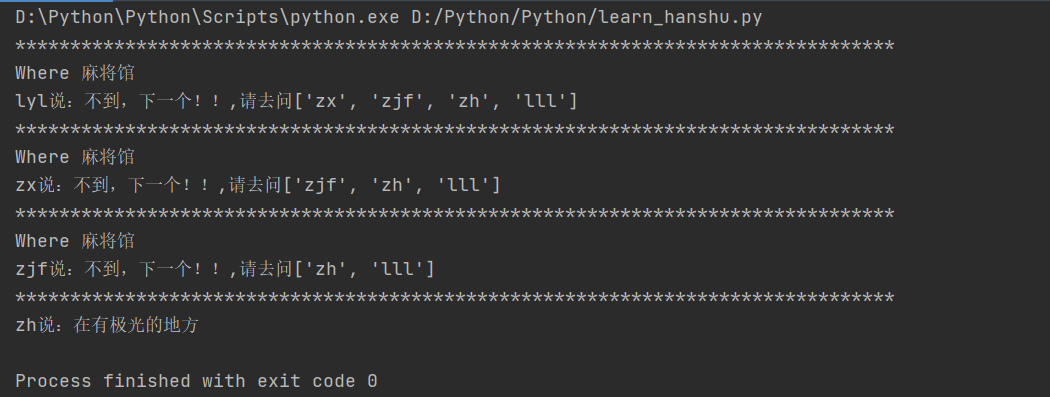定义:函数内部可以调用其他函数,如果一个函数在内部调用本身,则称为该函数为递归函数。
例1:死循环
import time def calc(n): time.sleep(2)#两秒出一个数 print(n) calc(n) calc(10)
例2:让数字10不断的除2,将整数列举出来
def calc(n): print(n) if int(n/2)==0: return n res=calc(int(n/2)) return res calc(10) ''' 运行结果: 10 5 2 1 '''
例3:问路程序
import time #首先定义一个路人列表 person_list=['lyl','zx','zjf','zh','lll'] #开始问路 def ask_way(person_list): print("*"*80) #明确终止条件(1、都不知道;2、zh知道路) if len(person_list)==0: return "都不知道,爱咋咋地" person=person_list.pop(0)#在列表中将被问路人一一弹出 #zh知道路 if person == 'zh': return "%s说:在有极光的地方" %person #代码修饰部分 print("Where 麻将馆") print("%s说:不到,下一个!!,请去问%s" %(person,person_list)) time.sleep(3)#时间 res=ask_way(person_list) return res res=ask_way(person_list) print(res)
运行结果:

递归特性:
1.必须有一个明确的结束条件
2.每次进入更深一层递归时,问题规模相比上次递归都应有所减少
3.递归效率不高;递归层次过多会导致栈澄出(在计算机中,函数调用是通过楼(stack)这种数据结构实现的,每当进入一个函数调用,栈就会加一层栈帧,每当函数返回,栈就会减一层栈帧。由于找的大小不是无限的,所以,递归调用的次数过多,会导致栈溢出>